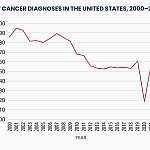
According to the International Diabetes Federation, around 537 million adults are currently living with diabetes, and the number is projected to rise to 643 million by 2030.
There are two main types of diabetes:
Type 2 diabetes, which is responsible for 90% of diabetes cases, is often linked to overweight, obesity or inactivity.
Some people with type 2 diabetes can control their blood glucose through a combination of a healthy diet and increased physical activity, but many rely on medications to reduce blood glucose.
These include:
A meta-analysis, published in the
The researchers found that both SGLT2 inhibitors and GLP-1 agonists were associated with a lower risk of major cardiovascular events, but the drug effects varied with the patients’ age.
Cheng-Han Chen, MD, a board-certified interventional cardiologist and medical director of the Structural Heart Program at MemorialCare Saddleback Medical Center in Laguna Hills, CA, not involved in the study, told Medical News Today:
“While they act through different biochemical pathways, both GLP-1 agonists and SGLT2 inhibitors have been shown to decrease the risk of cardiovascular disease. They both likely accomplish this by improving cardiovascular disease risk factors such as improving blood sugar control, improving blood pressure, promoting weight less, reducing inflammation, and improving blood vessel function.”
The researchers reviewed 601 published trials of older people to investigate whether the efficacy of three medications — DPP-4 inhibitors, SGLT2 inhibitors, and GLP-1 agonists — was affected by the age or sex of people with type 2 diabetes.
They looked at what effect the medications had on
People in the 592 HbA1c trials had a mean age of 58.9 years (42.3% female), and for the 23 trials that reported major adverse cardiovascular events, the mean age was 64 years (35.3% female).
All treatments reduced HbA1c by between 0.5% and 1.5%. SGLT2 inhibitors and GLP-1 agonists also reduced the risk of major adverse cardiovascular events.
“It is well established that all three medications are effective at lowering blood glucose, but only SGLT2 inhibitors and GLP-1 agonists have established additional benefits at reducing cardiovascular and kidney outcomes,“ Peter Hanlon, PhD, clinical senior research fellow at the University of Glasgow in Scotland, United Kingdom, and corresponding author on the review paper, told MNT.
“Our findings confirm this (already established) knowledge, but also show that the cardiovascular benefits of SGLT2 inhibitors are even greater in older compared to younger people, despite the glucose lowering effects being less in older people,” he noted.
SGLT2 inhibitors were more effective at lowering HbA1c in younger people, with efficacy decreasing as age increased. Conversely, GLP-1 agonists lowered HbA1c more effectively in older people.
Chen gave a possible explanation for this finding, telling MNT that: “The decrease in blood sugar control efficacy with SGLT2 inhibitors in older patients may be related to age-related decrease in kidney function. Previous studies have found that SGLT2 inhibitors appear to lower HbA1c less in patients with worse kidney function.”
“GLP-1 agonists appear to be less affected by this interaction,” he added.
In the trials of major adverse cardiovascular events, the researchers found that the relative reduction was greater in older people on SGLT2 inhibitors, and less in older people on GLP-1 agonists. However, GLP-1 agonists had more effect in younger, female participants.
“Both SGLT2 inhibitors and GLP-1 agonists are excellent drug categories that have improved the heart health of patients by improving many cardiovascular risk factors,” said Chen.
This review suggests that there may be benefits in taking a patient’s age into account when deciding which medications to prescribe for type 2 diabetes.
Although all of the patients in this review were middle-aged and older, the results suggest that SGLT2 inhibitors conferred greater cardiovascular benefits in the older patients, while GLP-1 agonists conferred greater benefits in those who were younger, particularly women.
Hanlon explained how their findings might influence prescribing:
“Clinicians already balance a range of factors when deciding on the best treatment for an individual. This includes the person’s treatment goals, factors such as weight, risks of given medication, other therapies people are taking, and age. Our findings show that SGLT2 inhibitors appear more effective in reducing cardiovascular events in older people, and this may be one piece of information that clinicians can take into account when deciding with individual patients what is best for them.”
“Our findings also suggest that clinicians should not be put off by smaller changes in blood sugar in older people, as the cardiovascular benefits were greater despite a smaller improvement in blood sugar,” he added.





